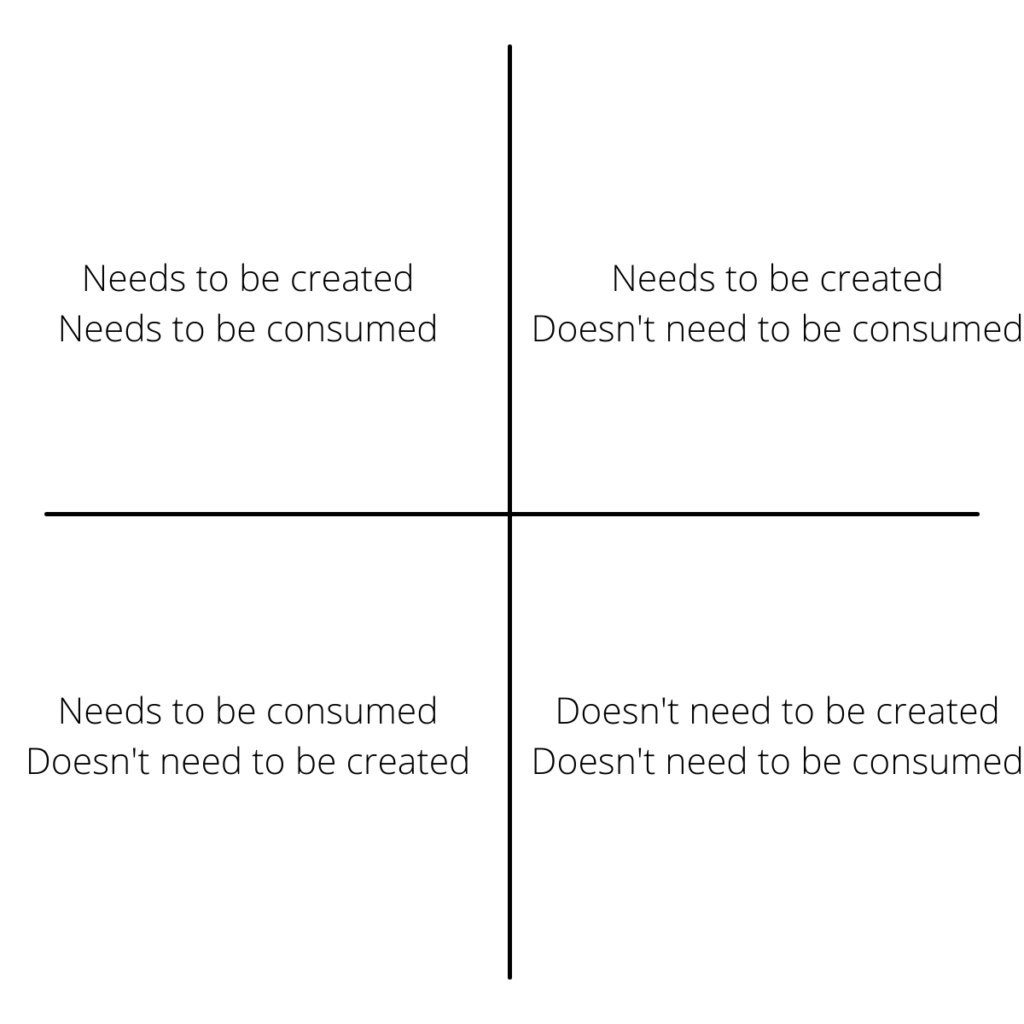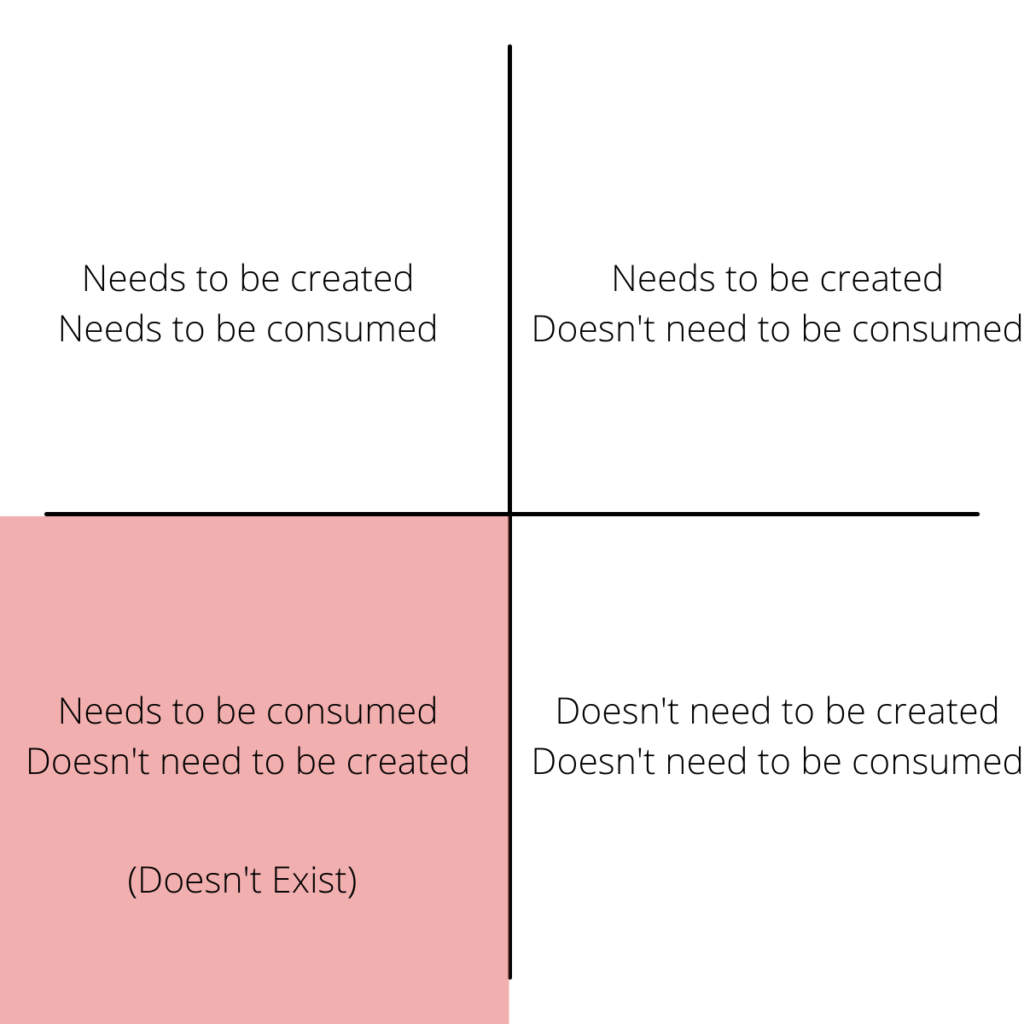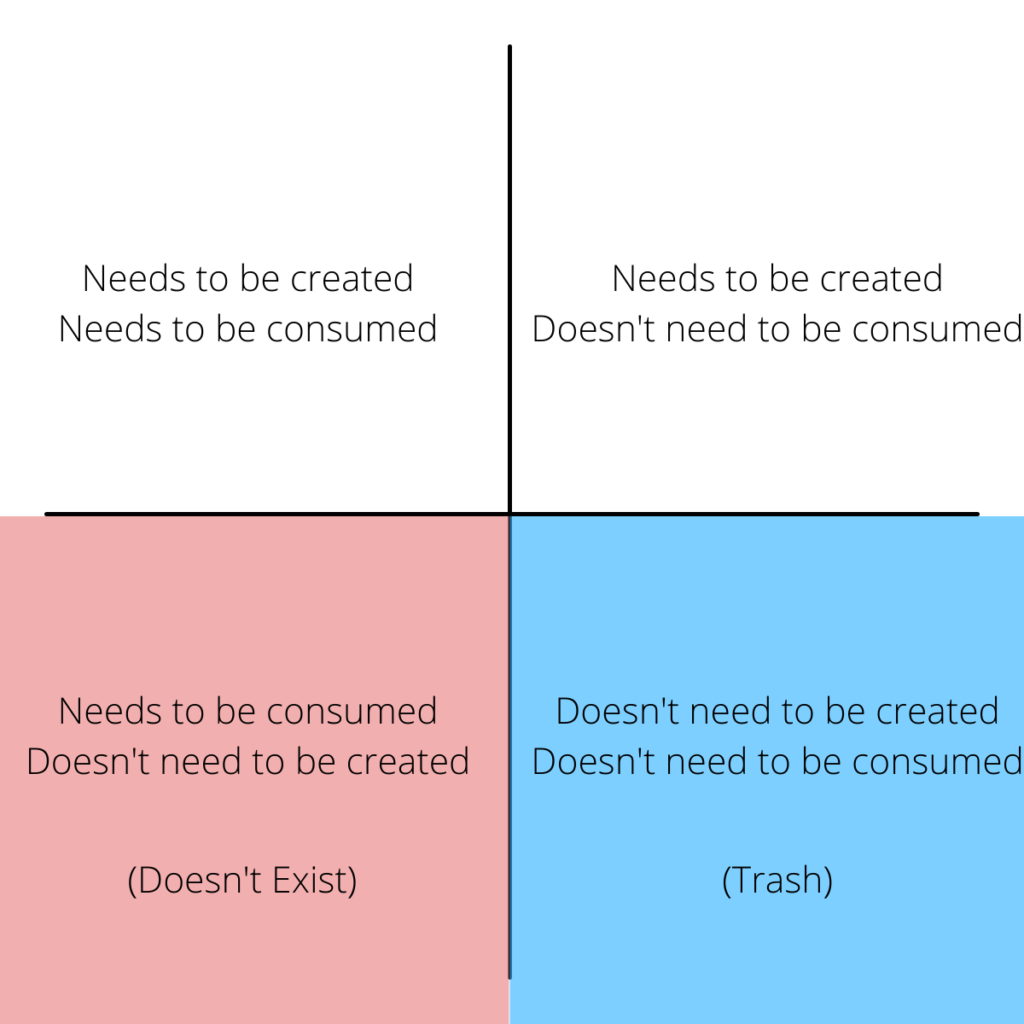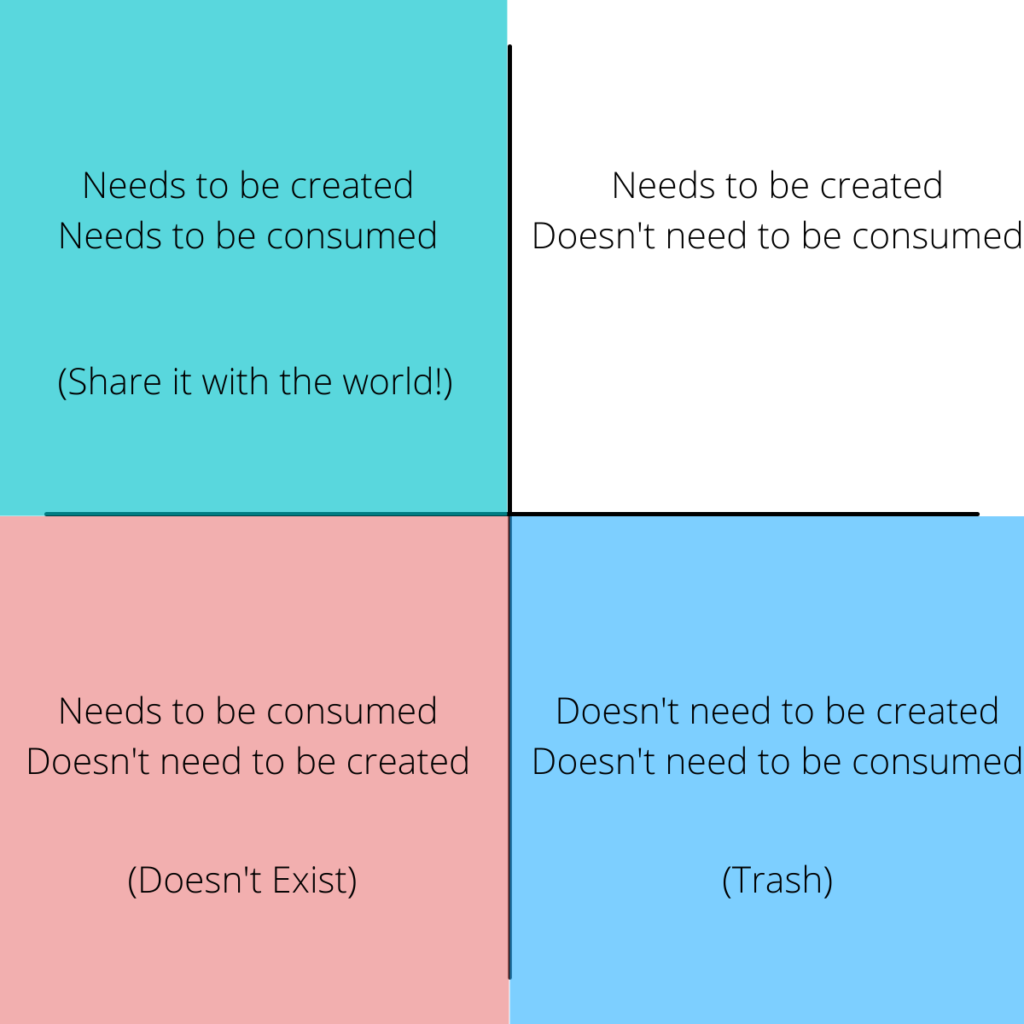In the social media-saturated culture we live in today, everything is shared.
I think this has put needless pressure on creative people: artists, writers, musicians, etc. We think that the purpose of creation is to share so others can consume what we’ve made. Then we wonder if what we’ve made is worth consuming. Is it good enough?
This leads to creative paralysis. We can’t move forward in our craft because we are insecure about the finished product we deliver to the world.
I’ve felt this before. How do we conquer it?
Every creative needs to ask two questions:
1. Does this need to be created (written, painted, crafted, filmed, etc.)?
2. Does this need to be consumed (read, gazed at, watched, listened to, etc.)?
The answers to those questions can help us out of paralysis and help us move forward in our craft. We’ll examine the various combinations of answers and what they mean for our creative work.
The Creation-Consumption Matrix

This is the Creation-Consumption Matrix. It helps us visualize the answers to our two questions above and what we can make of the answers we give.
Let’s get the bottom two quadrants out of the way first.
The bottom left quadrant is content that needs to be consumed but doesn’t need to be created. This doesn’t exist. If something needs to be consumed, it needs to be created. If people need to see a movie exposing an injustice, someone needs to make it. If they need to hear a song that inspires hope, someone needs to make that. The bottom left quadrant doesn’t exist in the real world.

Then we have the bottom right quadrant. This is content that doesn’t need to be created or consumed. In other words, this is trash. It’s not worth anyone’s time. And I’m not just talking about stylistically bad content. I’m talking about gross content. Things like pornography and violent content that appeals to the basest human instincts. No one needs to be creating that and no one needs to consume it. It’s worthless.

The Creation Need
The top two quadrants are much more interesting. Let’s start with the top left quadrant.
This is content that needs to be created and consumed.
Examples include investigative journalism, most honorable art, most books, most honorable films, etc. This is the creative work that compels a creator to create and demands to be shared and consumed by others. It’s a good song that a songwriter can’t help but write and that needs to be shared with the world. It’s an investigative journalism piece that would be criminal to ignore, for both the journalist and his audience.
All the creative work we share with the world falls into this quadrant. It needs to be created and we need to share it with people. If you are asking the two questions above about a creative piece and it lands in this quadrant, you need to share it with the world.
That’s not to say you can’t edit, iterate, and fine-tune. But at some point, you need to share it. Ships are safe in harbor but that’s not where they belong. Creative work has the potential to be perfect as long as it’s still sitting on your desk but if it’s top-left-quadrant work, it doesn’t belong there forever.
Embrace limited iteration. Give yourself a limited number of drafts. Decide ahead of time and when you’ve reached your limit, publish your work. We can’t hold onto our creative work forever, if it’s top-left-quadrant work that is.

Finally, we come to the top right quadrant. This is an especially important type of creative work. It compels the creator to create but it doesn’t need to be consumed.
Rarely do creators set out to intentionally create this kind of work. We often assume that we write, film, paint, and play for an eventual audience.
I’ve written a lot over the years. And a lot of that writing has been published. I’ve shared my creative work with the world here, on this website, on various other websites, in the form of books, and more.
But for every piece of creative work that I’ve shared with the world in the last decade, there has been at least one “unshared” counterpart: an essay of musings, a poem, an article draft, a short story, the beginnings of a novel.
These have not been published. And most never will be. They were just for me. They needed to be written but never needed to be read.
As creatives, we often wait for inspiration to land upon us. But we are also craftsmen and craftswomen. And we need to practice our craft. Practice doesn’t demand public participation. No one buys tickets to watch NFL and NBA players practice. They pay to see them play.
In the same way, not every creative practice needs to published. I’ve made a goal to write every day. Somedays, I publish what I write. Some days I don’t. It’s self-serving creation. It needs to be created, written, but only for me. I’m compelled to write but not to share.
Journaling is a perfect example of top-right-quadrant work. It needs to be created for the sake of the creator. But no one else needs to read it.
How does this apply to our problem of creative paralysis?
If we determine that we must create, we must. But if we determine that we don’t need to share, this frees us from the pressure to make it good enough. We can create for the very act of creating.

Questions => Clarity => Freedom
Ask yourself these questions and answer them thoughtfully. The clarity you gain will set you free to practice creative work without the pressure to make it “presentable”. If you determine it does need to be shared then you have already committed to share it. If it needs to be shared and you don’t share it, you’re dropping the ball.
Creative paralysis is a big problem for creative people. I hope this framework helps us share what we’ve made with the world, when appropriate.

